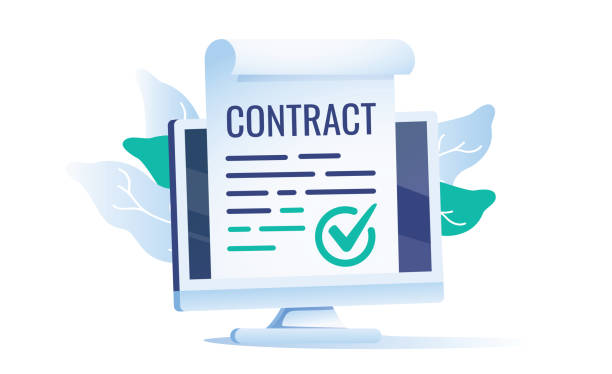Why is Secure Website Design a Necessity?
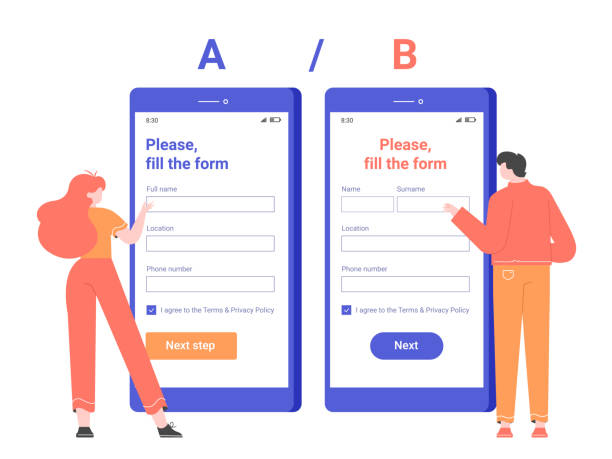
In today’s world, where digital borders are expanding day by day, secure website design is no longer a luxury choice, but a vital necessity.
Every day, we witness an increase in the number and complexity of #cyber_attacks, which can lead to the loss of sensitive information, service disruptions, and irreparable damage to business reputations.
Imagine an e-commerce website being attacked and customers’ credit card information stolen; the consequences of this incident could be loss of customer trust, heavy legal fines, and bankruptcy.
Or a news website whose content is manipulated and fake news is published, how can it restore its credibility? These are just some of the dangers that threaten a business if #website_security is ignored.
Organizations and individuals must understand that #data_protection and the stability of their online services strongly depend on secure website design standards.
This approach not only protects your and your users’ data but also provides assurance to the audience and ensures the stability of your business in the online space.
In fact, secure website design is an investment to preserve your digital values and assets, preventing security catastrophes and paving the way for sustainable growth.
Without attention to this important matter, you will be constantly at risk, and your efforts for progress may remain fruitless.
Are you dissatisfied with the low sales of your e-commerce website?
Rasawab is your solution for having a professional and high-selling e-commerce website.
✅ Significant increase in sales and revenue
✅ Easy and enjoyable shopping experience for customers
⚡ Get a free consultation from Rasawab right now!
Website Security Fundamentals: Introduction to Basic Principles
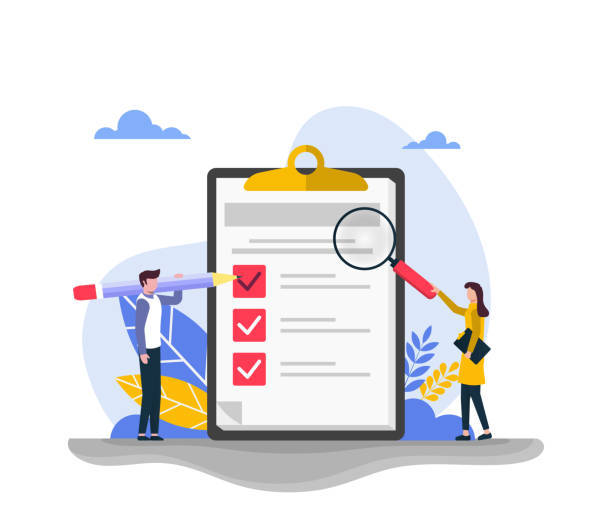
To begin the process of website security, we must first become familiar with the fundamentals and basic principles of website security.
The three main pillars of information security include Confidentiality, Integrity, and Availability, each playing a vital role in secure website design.
Confidentiality means that information is accessible only to authorized individuals, Integrity ensures that data remains unmanipulated and correct over time, and Availability means ensuring continuous and uninterrupted access for users to services and information.
One of the first steps to ensure confidentiality and integrity is to use SSL/TLS certificates, which encrypt communication between the user and the server and prevent information eavesdropping.
Using strong and unique passwords for administrative panels and users, as well as enabling two-factor authentication (2FA), are other essential measures.
In addition, regular updates of Content Management Systems (CMS), plugins, and themes cover known security vulnerabilities.
The responsibility of secure website design is not only on developers; users also play a significant role in maintaining security by observing security tips when using the site.
Educating and raising awareness among users about phishing and social engineering risks is also part of this comprehensive process.
By adhering to these principles, a more secure environment for online activities can be provided.
Technical Prevention and Countermeasures for Cyber Threats

In the field of secure website design, understanding and countering technical threats is of particular importance.
Attacks such as SQL Injection, which allows an attacker to inject malicious SQL code into the database, or XSS (Cross-Site Scripting), which enables the injection of malicious scripts into web pages, are among the most common vulnerabilities.
Also, DDoS (Distributed Denial of Service) attacks aim to disable website services by sending a huge volume of traffic.
For prevention, Input Validation is a fundamental measure; never trust user-entered data and clean and validate it before use.
Using secure coding frameworks and adhering to OWASP Top 10 standards are also crucial for developers.
Implementing a Web Application Firewall (WAF) can act as an additional defense layer and filter many common attacks.
These firewalls monitor incoming and outgoing website traffic, identifying and blocking suspicious patterns.
Furthermore, encrypting sensitive data, especially in the database, and using secure connections (HTTPS) for all data exchanges are essential.
Secure website design in practice means the continuous integration of these tools and approaches throughout all stages of website development and maintenance.
The table below shows some common vulnerabilities and methods to prevent them.
| Vulnerability Name | Brief Description | Prevention Methods |
|---|---|---|
| SQL Injection | Injecting malicious SQL codes into the database | Using Prepared Statements and ORM, input validation |
| Cross-Site Scripting (XSS) | Injecting malicious scripts into users’ browsers | Proper Output Encoding, using Content Security Policy (CSP) |
| Broken Authentication | Defect in authentication mechanisms | Using strong passwords, 2FA, secure session management |
| Sensitive Data Exposure | Disclosure of sensitive information | Encrypting data at rest and in transit, avoiding storage of unnecessary information |
| Missing Function Level Access Control | Lack of access control at function level | Correct implementation of access control mechanisms (RBAC) |
Security Checklist for Developers and Website Administrators
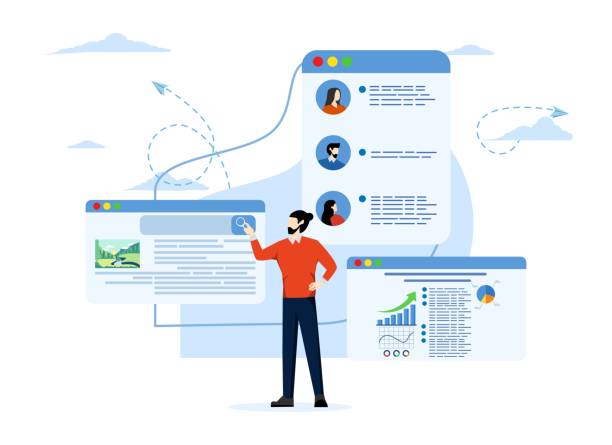
To ensure that a website is as secure as possible, developers and site administrators must follow a comprehensive security checklist.
The first and perhaps most important step is regular updates of all software and components.
This includes the Content Management System (CMS), plugins, themes, and even the server operating system.
Many attacks occur through known vulnerabilities that can be fixed with a simple update.
Second, implementing strong password policies and forcing users to use complex and unique passwords.
Also, limiting login attempts to prevent brute-force attacks is very important.
Third, choosing a Secure Hosting environment that utilizes advanced firewalls, malware scanning, and intrusion detection systems.
Fourth, performing regular and automatic backups of all website data and files and storing them in a secure, separate location.
This allows for quick recovery after any attack or failure.
Fifth, conducting periodic Security Audits and Penetration Testing by specialists.
These tests help identify weaknesses before attackers discover them.
Sixth, using security CDNs and DDoS protection services.
Finally, restricting access to files and folders (File Permissions) and ensuring that only authorized users have access to sensitive sections are other vital components for website security and maintaining its integrity.
Adhering to this checklist will be a big step towards secure website design and stability.
Don’t have a corporate website yet and missing out on online opportunities? With professional corporate website design by Rasawab,
✅ Double your business credibility
✅ Attract new customers
⚡ Free consultation for your corporate website!
Threat Analysis and Risk Assessment in Web Design

One of the most important steps in the secure website design process is conducting a comprehensive analysis of potential threats and a precise assessment of risks.
This process helps organizations and developers to realistically look at their website’s vulnerabilities and optimize their resources to counter the most significant dangers.
Threat analysis includes identifying all potential entry points for attackers, the types of data that might be at risk, and various attack scenarios.
For example, if a website processes customers’ financial data, threats such as credit card information theft or phishing attacks should be examined with high priority.
The concept of Threat Modeling is very useful here, systematically identifying and documenting security threats in the early design stages.
After identifying threats, it’s time for risk assessment.
This stage involves estimating the probability of each threat occurring and also the severity of its consequences if the attack is successful.
Risks are usually classified as low, medium, and high to allow security measures to be planned based on these priorities.
For instance, a high-probability vulnerability with catastrophic consequences (such as the disclosure of millions of users’ data) should be addressed immediately.
In contrast, a low-probability vulnerability with minor consequences might be placed on lower priorities.
This systematic analysis not only contributes to secure website design but also leads to the creation of an effective Incident Response Plan, so that in the event of an attack, action can be taken quickly and efficiently to minimize damages.
Latest News and Security Trends in the Web World
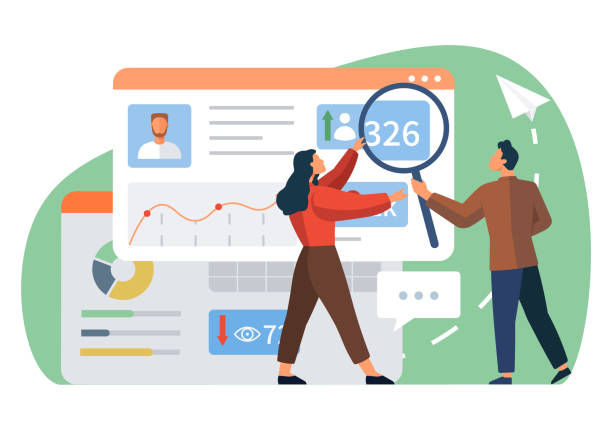
The world of cybersecurity is a dynamic and evolving field, and maintaining website security requires awareness of the latest security news and trends.
Attackers are constantly discovering new methods of penetration, and this increases the need for vigilance and continuous updating of secure website design strategies.
In recent years, we have witnessed the emergence and increasing complexity of attacks such as Supply Chain Attacks, where attackers, instead of directly attacking the ultimate target, attack one of its software or service providers to penetrate the target system through it.
Famous examples of these attacks include software vulnerabilities in popular tools that lead to widespread infections.
Also, Zero-Day Exploits, which exploit unknown vulnerabilities and are abused before developers have a chance to fix them, have created a significant challenge.
These attacks show that simply regular updates are not enough, and the need for active monitoring and the use of advanced intrusion detection systems is felt more than ever.
Other trends include an increase in targeted phishing and social engineering attacks that, by leveraging artificial intelligence and information gathered from social networks, mislead users.
Countering these trends requires a combination of powerful technical tools, continuous user awareness, and a comprehensive strategy for website security that goes beyond traditional measures.
Companies and websites must constantly follow security reports, news related to new attacks, and expert security recommendations to avoid being vulnerable to emerging threats.
Is Our Perception of Website Security Sufficient?

Often people think that by installing an SSL certificate and using a popular CMS like WordPress, their website is completely secure.
But is this perception truly sufficient? This is a questionable content that many website administrators face.
The truth is that while SSL is essential for encrypting communications and popular CMSs constantly provide security updates, these are only a small part of the secure website design puzzle.
Many attacks occur not due to flaws in the core systems, but due to vulnerabilities in third-party plugins or themes, incorrect server configurations, or even human errors.
For example, an old or poorly coded plugin can easily become a backdoor for intruders, even if the WordPress core is fully updated.
On the other hand, the human element remains one of the biggest weaknesses in cybersecurity.
Social engineering attacks such as phishing or Baiting attacks, which trick users into revealing confidential information or installing malware, cannot be prevented by any SSL or WAF.
Insider Threats are another challenge; disgruntled or careless employees can easily access sensitive data and disclose it.
Therefore, for true secure website design, one must go beyond superficial measures and adopt a multi-layered and comprehensive approach that includes employee training, regular security audits, and continuous monitoring of activities.
The table below shows some common perceptions and security realities.
| Common Perception | Reality |
|---|---|
| SSL/HTTPS makes the site completely secure. | SSL only encrypts communication, not website vulnerabilities. |
| A popular CMS like WordPress is inherently secure. | Security heavily depends on updates, plugins, and correct configuration. |
| Antivirus on my computer is enough. | Website security requires server-level and code-level measures and is different. |
| My website is small, it won’t be targeted. | Many attacks are automated and look for any vulnerability, size doesn’t matter. |
| We only need to worry about security when an attack occurs. | Security is a continuous and proactive process. |
The Role of Artificial Intelligence and Machine Learning in Secure Website Design

With remarkable advancements in Artificial Intelligence (AI) and Machine Learning (ML), these technologies play an increasing role in strengthening website security.
AI and ML are capable of identifying complex and unusual patterns in vast amounts of data, which is beyond human capabilities.
These capabilities are particularly useful in Anomaly Detection; for example, an AI-based system can learn normal website traffic and then identify any unusual traffic or suspicious behaviors that could indicate a DDoS attack, intrusion, or malware injection.
Furthermore, automated vulnerability scanning tools, leveraging ML, can continuously analyze website code and server configurations to find known and even unknown weaknesses.
These tools can help developers in secure website design by learning from past attacks and successful intrusion patterns, predicting new attack vectors.
Another important application is improving Intrusion Detection Systems (IDS) and Intrusion Prevention Systems (IPS) which, using ML, can differentiate between legitimate and malicious traffic and automatically activate defensive measures.
Also, in the fight against phishing and spam attacks, AI can identify and block suspicious emails and content with high accuracy.
With this in mind, the use of AI/ML in security also presents challenges, including the need for quality training data and the risk of Adversarial attacks that attempt to deceive AI systems.
Nevertheless, these technologies are rapidly becoming the backbone of modern website security strategies, and the future of secure website design is unimaginable without them.
Is your current e-commerce website design not achieving the sales you expect?
Rasawab is an expert in professional e-commerce website design!
✅ An attractive and user-friendly website aimed at increasing sales
✅ High speed and security for an ideal shopping experience⚡ Get a free online store design consultation with Rasawab!
Security in Web Architecture and Infrastructure

To ensure a comprehensive and secure website design, security must be embedded from the outset in the web architecture and its infrastructure.
This approach, known as “Security by Design”, means considering security considerations at every stage of the software development lifecycle, from initial design to deployment and maintenance.
A critical aspect is secure server configuration.
This includes removing unnecessary services, closing unused ports, and using hardware and software firewalls to restrict access.
Network Segmentation is another key strategy; by dividing the network into smaller subnets, even if one section is attacked, penetration into other sections becomes more difficult.
For example, separating web servers from databases and management servers.
API (Application Programming Interface) security is also crucial in modern web architectures, especially those using microservices.
Strong authentication, rate limiting, and input validation are essential for APIs.
Furthermore, secure database management through encryption of sensitive data, restricting access to the least necessary privilege, and monitoring database access logs are fundamental pillars of secure website design.
Using Centralized Logging systems and Security Information and Event Management (SIEM) systems also enables quick monitoring and analysis of security events.
These comprehensive measures at the infrastructure level will guarantee a secure site construction that is resilient against a wide range of threats.
Maintenance, Updates, and the Future of Web Security

The process of secure website design does not end with website launch, but is an ongoing process requiring continuous maintenance, updates, and monitoring.
Regular security audits and Penetration Testing should be periodically conducted by independent specialists to identify and fix new weaknesses.
Any changes to code, plugins, themes, or server configurations must be tested according to security principles in an isolated environment (Staging Environment) before being moved to the production environment.
Creating an Incident Response Plan, which includes detection, containment, eradication, and recovery steps after a cyberattack, is vital for every website.
This plan should be regularly reviewed and practiced.
Continuous training of the development and management team on the latest threats and best security practices also plays an important role in maintaining security.
Regarding the future of web security, we are witnessing the emergence of new challenges and solutions.
Threats arising from Quantum Computing, which could break current encryption algorithms in the future, have created the need to develop quantum-resistant cryptography.
The use of blockchain technology to increase data transparency and security, as well as the “Zero Trust” architecture which assumes no trust in any user or device and requires authentication every time, are future trends.
Ultimately, secure site construction means constant vigilance, adaptability to changes, and an ongoing commitment to protecting digital assets against increasing threats.
This path has no end and requires continuous updates and evolution.
Frequently Asked Questions
| Question | Answer |
|---|---|
| What is secure website design? | Secure website design is a process in which websites are built with security principles in mind to be resistant to cyberattacks and to protect user and business information. |
| Why is secure website design highly important? | To prevent unauthorized data access, leakage of sensitive information, malware attacks, loss of user trust, damage to business reputation, and legal consequences resulting from data breaches. |
| What are the most common website vulnerabilities? | SQL Injection, Cross-Site Scripting (XSS), Cross-Site Request Forgery (CSRF), Broken Authentication and Session Management, and Sensitive Data Exposure. |
| How can SQL Injection attacks be prevented? | Using Prepared Statements with parameterized queries, Input Validation, and limiting database access. |
| What are the methods to counter XSS (Cross-Site Scripting) attacks? | Input Validation, Output Encoding before displaying in HTML, and using Content Security Policy (CSP). |
| What is the role of HTTPS in website security? | HTTPS, using an SSL/TLS certificate, encrypts the communication between the user’s browser and the website server, preventing eavesdropping, tampering, or forgery of data. |
| What are the best practices for user password management? | Enforcing strong passwords (a combination of letters, numbers, and symbols), hashing passwords instead of direct storage (with strong algorithms like bcrypt), and enabling two-factor authentication (2FA). |
| What is the importance of User Input Validation? | Input validation prevents malicious or unexpected data from entering the system, which can lead to vulnerabilities such as SQL Injection or XSS. |
| What impact do security reviews and regular audits have on site security? | These reviews help identify vulnerabilities and security weaknesses early, allowing them to be fixed before they can be exploited. |
| What is the use of a Web Application Firewall (WAF) in secure website design? | A WAF acts as a protective layer between the user and the website, analyzing incoming traffic and identifying and blocking common web attacks such as SQL Injection and XSS. |
And other services of Rasawab Advertising Agency in the field of advertising
Smart Social Media: Professional optimization for increased sales using Google Ads management.
Smart Advertising Campaign: A combination of creativity and technology to attract customers through marketing automation.
Smart Google Ads: An effective tool for increasing website traffic with the help of marketing automation.
Smart Customer Journey Map: Designed for businesses looking to analyze customer behavior through attractive UI/UX design.
Smart Marketing Automation: Designed for businesses looking to engage users through intelligent data analysis.
And over hundreds of other services in the field of internet advertising, advertising consultation, and organizational solutions
Internet Advertising | Advertising Strategy | Advertorials
Sources
Iran Host Secure Website Design Guide
Best Web Security Practices on Sarv
Website Security Tips from Pars Data
Digital Future and Web Security on Host Iran
? Transform your business in the online world and take it to the top with the professional services of Rasawab Afarin Digital Marketing Agency. From custom website design to SEO and social media management, we are with you to achieve your goals. For consultation and to receive solutions tailored to your business, contact us today.
📍 Tehran, Mirdamad Street, next to Bank Markazi, Southern Kazeroun Alley, Ramin Alley, No. 6

